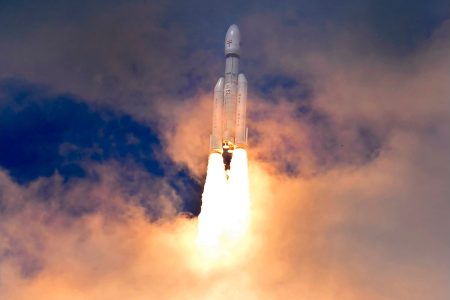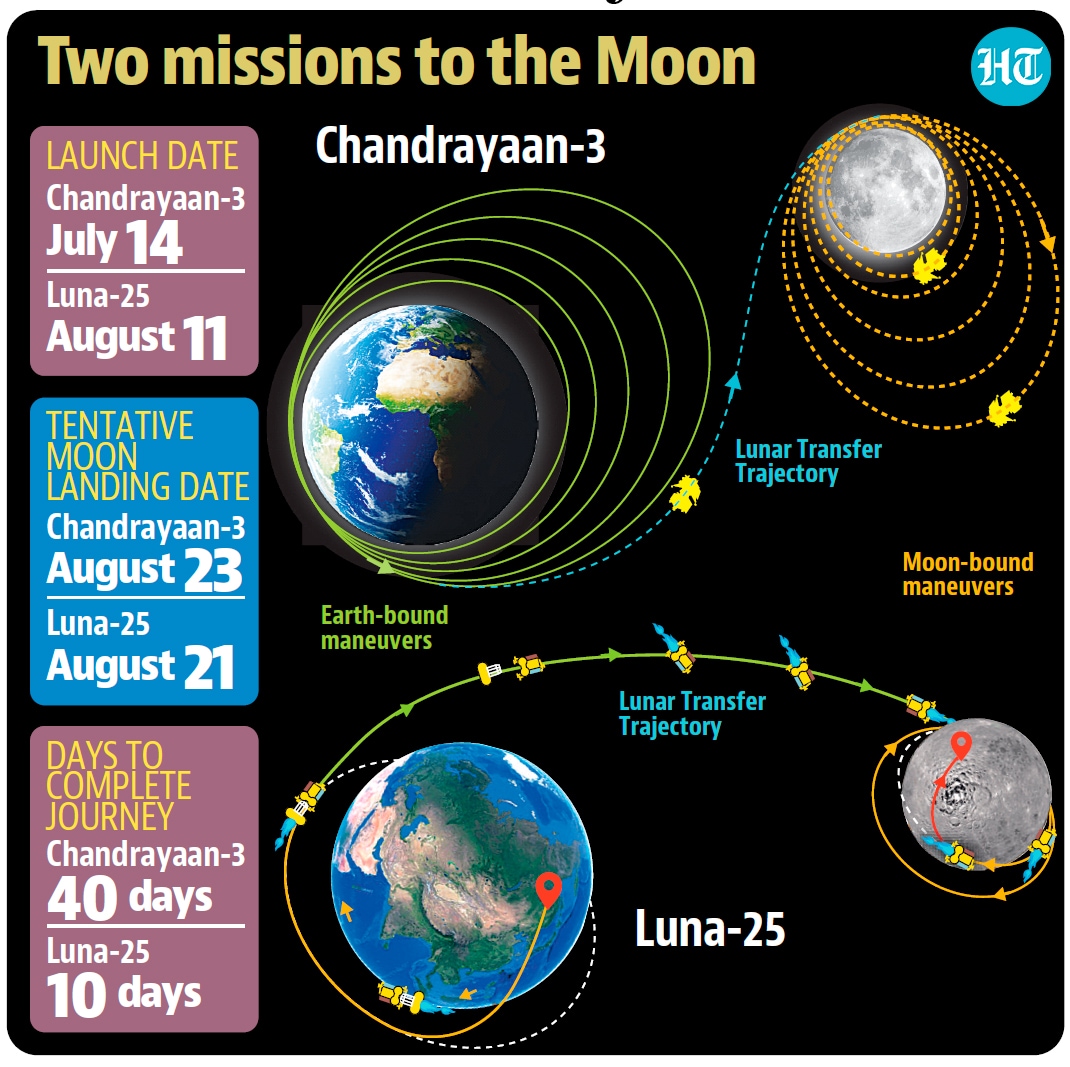New Delhi: India’s third mission to the moon, Chandrayaan-3, is vastly different from that of Russia’s Luna-25 in methodology, route and experiments, Indian rocket scientists said on Saturday.
While Chandrayaan-3 was launched on July 14, Russia successfully launched its inaugural moon-landing spacecraft on Friday. Luna-25 will complete the journey in 10 days, as compared to Chandrayaan-3’s 40 days, because it relies on a high-powered rocket, while the Indian craft is guided largely by the gravitational forces of the earth and the moon. Both the missions will attempt to land on the lunar south pole.
Chandrayaan-3, launched from the Satish Dhawan Space Centre in Sriharikota on July 14, is expected to land on the lunar surface around August 23 after completing a 40-day journey. Luna-25, which took off on August 11, is expected to land on the moon around August 21, two days ahead of Chandrayaan-3.
The difference in journey time is because India’s spacecraft relies more on the gravitational forces of the earth and moon, a scientist at the Indian Space Research Organisation explained, unlike Luna-25, which has a high-powered rocket with a higher fuel load, capable of powering the spacecraft through the mission, without having to rely on external help.
Once Chandrayaan-3 was launched, it was placed into an elliptical orbit around earth, after which the craft kept revolving till the space agency carried out a series of manoeuvres to raise its orbit, gradually pushing it away from the planet and finally guiding it into a lunar orbit, he explained on condition of anonymity.
Following a similar pattern, Isro is continuing to perform orbit-reducing manoeuvres till the spacecraft reaches closer to the moon’s surface and makes a soft landing.
“India’s space programme is based on the principle of frugal innovations. We try to make our missions as cost-effective as possible,” the Isro official said. “Our mission might be taking longer, but we are ensuring that our journey to the moon is extremely fuel-efficient and cost-effective.”
The country followed the same methodology in two of the preceding moon missions, Chandrayaan-1 in 2008 and Chandrayaan-2 in 2019.
To send Luna-25 to the moon, Russia is using Soyuz 2.1, which is a powerful rocket that can give the necessary thrust to the spacecraft to reach the moon’s surface, instead of having to wait in earth’s orbit.
The Indian space agency, which launched its craft on-board the Launch Vehicle Mark-3, earlier known as the GSLV MK3, has a far less fuel capacity and thrust. It also has limitations of the payload capacity.
Chandrayaan-3, a follow-up mission to Chandrayaan-2, aims to demonstrate end-to-end capability in safe landing and roving on the lunar surface.
The spacecraft comprises a lander and a rover, which will be carried by a propulsion module till a 100km lunar orbit.


